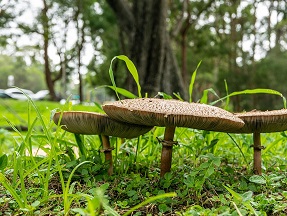Plant biostimulation is a new approach to agriculture. So far, substances that assisted the farmer were fertilizers and plant protection products, each with a well-known chemical composition. Biostimulants on the other hand are mixtures of compounds and organisms defined primarily by their effects: their beneficial functions to grower, agrosystem and the environment.
This is a review of the opening chapter of the recently published book ‘Bio-stimulants for sustainable crop production’, ISBN 9781786763365. Earlier, Alle Bruggink wrote a review of the whole book on this site.

Biostimulation, a modern look on old truths
In a sense, we have always known that many more factors than fertilizer and plant protection products determine the crop’s yield. Biostimulation delves into this intuitive knowledge. It does not challenge plant breeding and cropping techniques, but provides growers with new means of intervention. Modern techniques have contributed to unravelling the specifics of biostimulation. These include:
– analysis of the soil microbiome
– better isolation and understanding of beneficial microbes
– marketing of biostimulants as commercial products
All in all, this opens up a new chapter in agriculture. A chapter not defined by one-on-one causal relationships, but by a holistic approach, as Alle Bruggink put it.
This is a welcome new insight. But regulation might become much more difficult. So far, regulation was relatively easy, based on a clear-cut distinction between biostimulation (by fertilizer) and plant protection (by pesticides and herbicides). But as soon as plant-associated microbes are involved, this line blurs. We now discover that ‘in real life, there can be no partition between biostimulation and plant protection, as organisms interacting with plants will de facto alter multiple life traits involved in growth, plant health and pathogen response’ (p.18). So far, only the EU has succeeded in an ‘ambitious’ attempt to regulate plant biostimulants satisfactorily. It concentrates on the effects rather than on the composition of the agent. But this regulation too, marks just the beginning of a complicated regulatory task ahead.

Sustainable agriculture
Biostimulation is an exciting new chapter in agriculture. In it, we recognise that many natural substances and microorganisms will influence plant health and yield. Biostimulants promote the uptake of nutrients. They can protect the crop against an abiotic stress like draught. Much used biostimulants are humic acids, seaweed extracts, protein hydrolysates and mixtures of microbes like mycorrhiza. But their study is complicated. Often, growers see ‘inconsistencies’ in the effects of biostimulation. Inconsistencies that cause scepticism and complicate regulation. We should rather look upon such inconsistencies, this book tells us, as a ‘lack of understanding’ of plant stress physiology. As a reason to pursue this line of inquiry with even more vigour.
Biostimulation opens up new vistas on a sustainable agriculture. Its discovery can be regarded as a ground-breaking event in our understanding of plant health and productivity. Why not follow it up in animal husbandry? There too, lies a large field of opportunities to stimulate health and productivity by biostimulants.
Interesting? Then also read:
Reductionism and holism in the life sciences
Mother Earth Day: let us protect healthy soils
Antibiotics resistance, and how to overcome it

I have a pot trial on seaweed extract for grassland running at the moment.